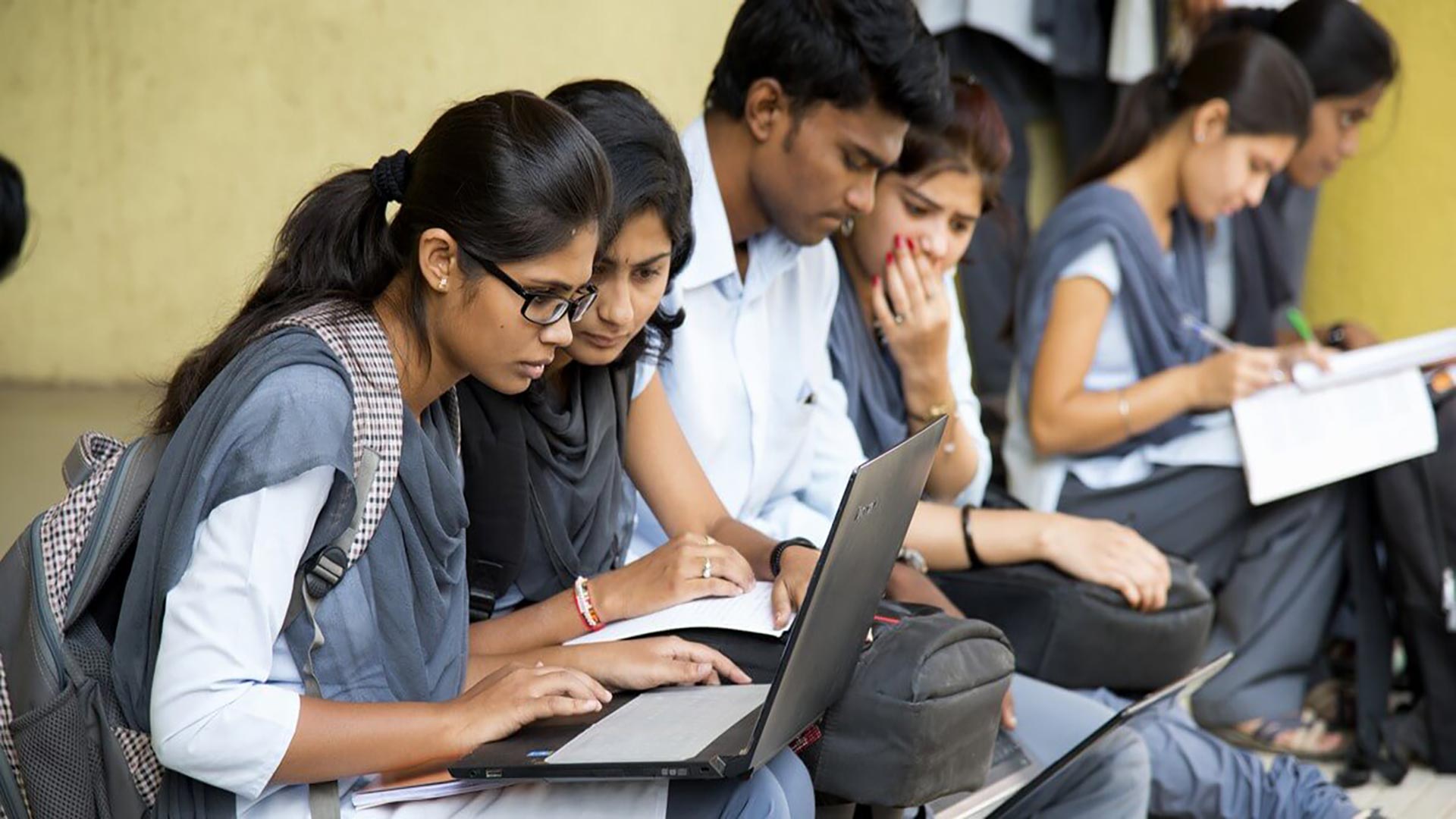Blending tradition and innovation
It is no secret that the covid-19 pandemic has hit the education sector worldwide quite badly. In India, the shutting of thousands of schools, colleges and universities has had huge social and economic implications. To offset the damage and loss, it became necessary to transit to online teaching and learning.
Meanwhile, the National Education Policy (2021) has emphasised the importance of a hybrid (online and physical) mode of education. On the one hand, it will be a mammoth task for educationists and administrators to blend the two systems on the ground; on the other, it is a moot point whether the country’s internet infrastructure will support the innovation. With only 24% of the country’s households having access to the internet (down to 4% in rural India), technology-driven education might well create a new class of dropouts along the lines of gender and social class.
Against this grim background, the Bharatnet project is being seen as a ray of hope; it aims to provide fibre optic broadband to 250,000 gram panchayats. Of course, the building of digital infrastructure alone is not enough; staff have to be trained accordingly, ensuring authentic and seamless delivery. Then again, one is baffled by the Union Education ministry's drastic budget reduction for digital e-learning (from Rs 604 crore in 2019-20 down to Rs 469 crore in 2020-21) at this crucial juncture.
Even while e-teaching, e-learning and e-governance are quickly becoming the new normal, it is unrealistic to expect people’s experiences to be the same across the length and breadth of the country. For instance, online teaching and learning have been smoother in urban India than in most parts of rural India. And while many universities have returned to their pre-pandemic academic schedules, ours has not yet been able to beat the delays. For our part, we made it a point to elicit students’ responses to online learning, by means of an online survey devised by the Department of English, so as to better understand the changing educational scenario in pandemic times.
To begin with, despite efforts to the contrary, only 50% per cent of the total number of registered students responded to the online survey – probably a pointer to the weariness that has set in vis-à-vis the current situation. Furthermore, students’ responses to the very first question (“At the beginning of the academic year, were you super-excited about the new, online mode of education?”) spoke volumes. There was a huge discrepancy between the opinions expressed by the First, Second, and Third Year students: in fact, their enthusiasm in descending order (53.6%, 33.9% and 12.4%, respectively) made it look like they were utterly dismissive of the déjà vu.
There is no doubt that the digital world has grown exponentially in the wake of the covid pandemic. In terms of availability of devices and resources, it has been a situation of plenty, leading the IT sector to register tremendous profits. However, our survey points to 100% student dependence (and almost exclusively so) on the smartphone for online learning; alternative device use is negligible (laptop, 4.2%, or a desktop, 0.6%. Whether or not it is a portrayal of the younger generation’s casual attitude to learning or is a plain attempt to cling to that versatile digital companion as a means to cut down costs is just anybody’s guess.
 Google Meet was found to be the most popular learning platform (100%); other options included Microsoft Teams (50.3%) and Zoom (11.2%). But even when using the platform of their choice, only 12.1% found it “always easy” to understand” what was taught; 63.9% of the students found it “sometimes easy”, 18.2%, “rarely easy” and the rest, 5.8%, “never easy”. Interestingly, when it came to receiving learning material, WhatsApp won hands down (62.1%), followed by Microsoft Teams (27.9%). That is to say, even low-tech interventions (SMS text messages and phone calls) can sometimes help mitigate learning losses caused by non-availability of ideal devices.
Google Meet was found to be the most popular learning platform (100%); other options included Microsoft Teams (50.3%) and Zoom (11.2%). But even when using the platform of their choice, only 12.1% found it “always easy” to understand” what was taught; 63.9% of the students found it “sometimes easy”, 18.2%, “rarely easy” and the rest, 5.8%, “never easy”. Interestingly, when it came to receiving learning material, WhatsApp won hands down (62.1%), followed by Microsoft Teams (27.9%). That is to say, even low-tech interventions (SMS text messages and phone calls) can sometimes help mitigate learning losses caused by non-availability of ideal devices.
If the test of the pudding is in the eating, it must be acknowledged that a host of problems have made the learning experience woeful: a whopping 89.4% pertain network issues. Students have also complained of feelings of social isolation and difficulty to concentrate when online. Some students were conscious of the unsuitability of their device but could do little when faced with financial crunches ˗˗ a huge eyeopener indeed.
It is to be noted, on the other hand, that the teaching community too has not been immune to network issues. It is a known fact that teachers in almost all colleges in the state have had to depend on their own mobile data to hold classes; institutional wi-fi was either non-functional or the bandwidth inadequate. No wonder, 55.8% of the students surveyed stated that their lectures and/or practicals were sometimes rescheduled, or never held at all.
But, by and large, it is a huge credit to the teachers that they were able to deliver despite all odds: 46.1% of the students stated they have always received adequate learning material from their teachers. But having said that, it is baffling how, in the event of the teacher’s explanation falling short, 60.3% approached fellow-students for clarification of doubts; only 23.9% contacted the teacher concerned, and 14.8% decided to depend on themselves. But none of it was a slur on the teachers’ popularity levels: teachers have almost always shown great understanding; only a miniscule group of students pointed to a lack of sympathy and support from the teaching faculty.
Through it all, that students’ attendance kept falling is an undeniable fact. To get to the root of the issue, is it because absenteeism is no longer punishable? Or is multi-tasking a contributing factor? Quite interestingly, 48% of the students said they systematically avoided multitasking. But from among those who did multitask, 24.4% specified that they chatted and 23.7% cooked; some others watched television or even went shopping. Those who remained glued to their devices complained of weight gain, strain on eyes, mental stress, and headaches, especially when classes are held back-to-back.
Finally, the testing methods. The system evolved quickly to suit the online mode. Maximum marks (80) were halved and the number of questions reduced to just two main ones. Needless to say, answer scripts quite often felt like photocopies. Curiously, the testing methods, coming across as somewhat easy-going, inspired even dropouts to try their luck with the system. And needless to say, online exams were not free of network problems (80.9%) and grievances regarding time constraints (11.2%).
It has come as no surprise that 49.4% of the students found their learning levels seriously compromised by the online mode of education; 13.3% felt they had learned “nothing” online; 21.2% found no difference between the two modes whereas only 16.1% proudly asserted that they had attained higher learning levels through the online mode.
All things considered, however, a humongous 63.3%, opted for the offline mode of teaching. This is not a vote against trailblazing technology but for a smart blend of good ol’ tradition and innovation.
(Editorial, Prerana, June 2021)
Pic credit: https://www.studyinternational.com/news/what-this-innovative-indian-university-is-doing-differently/
